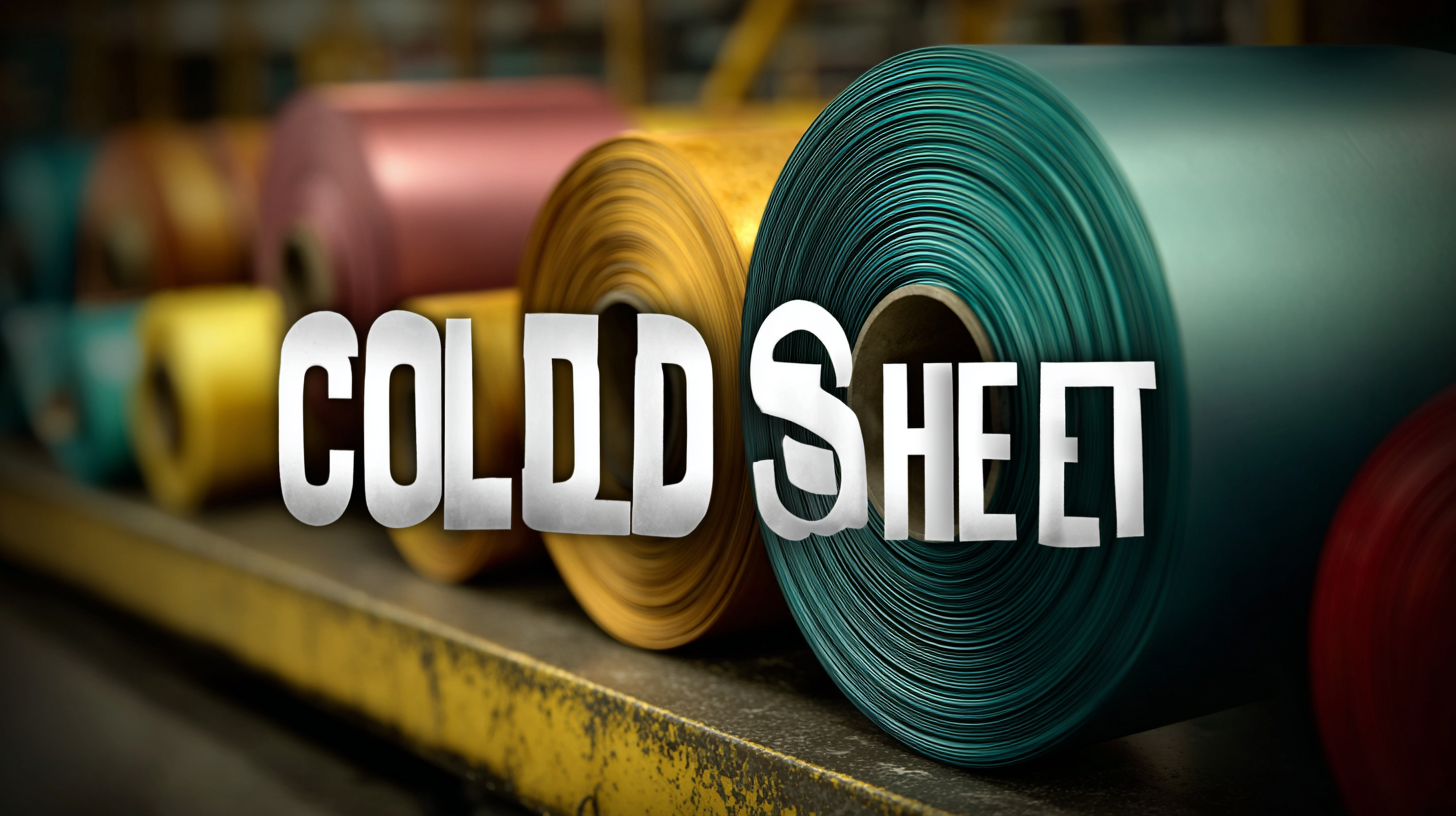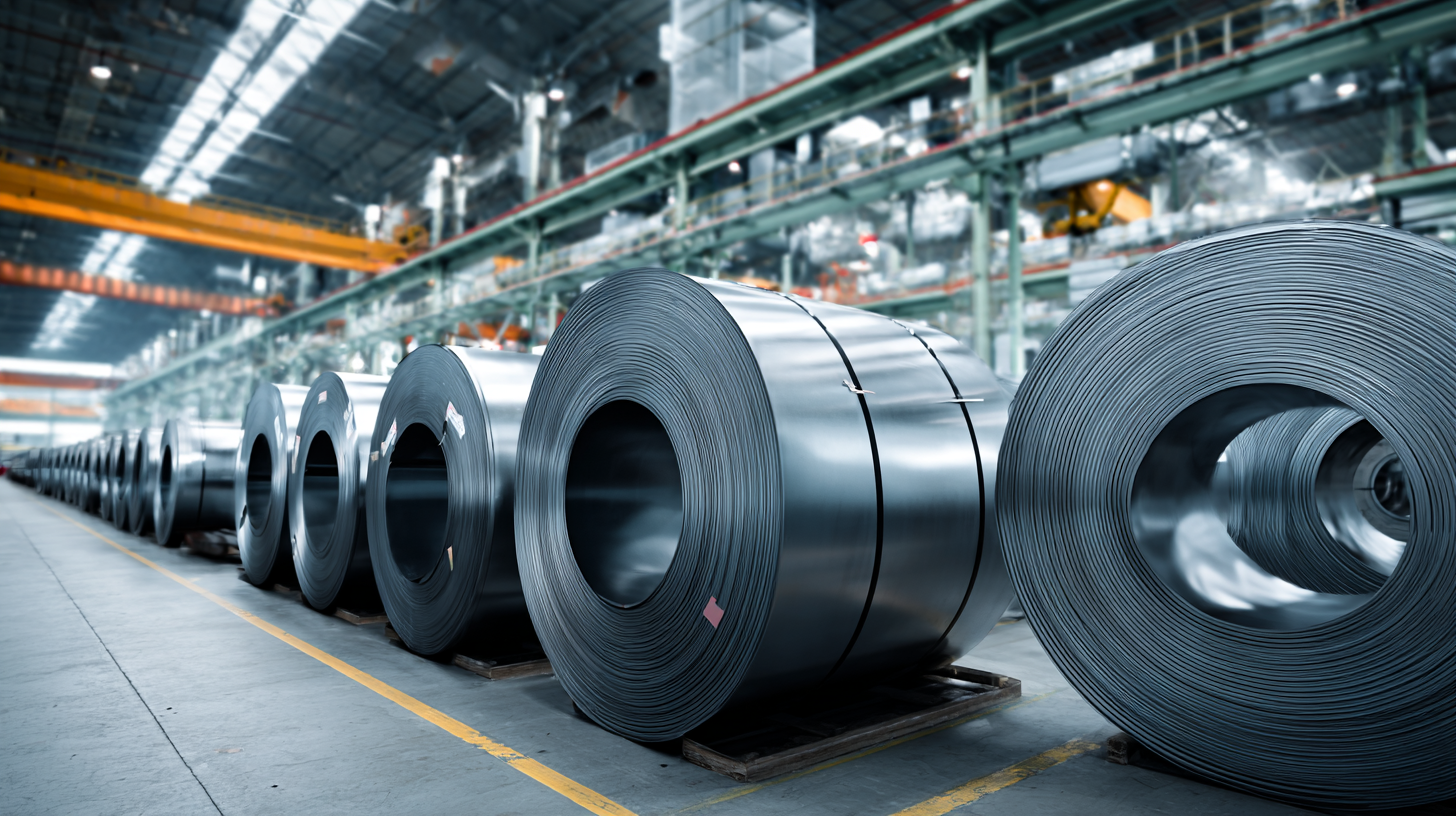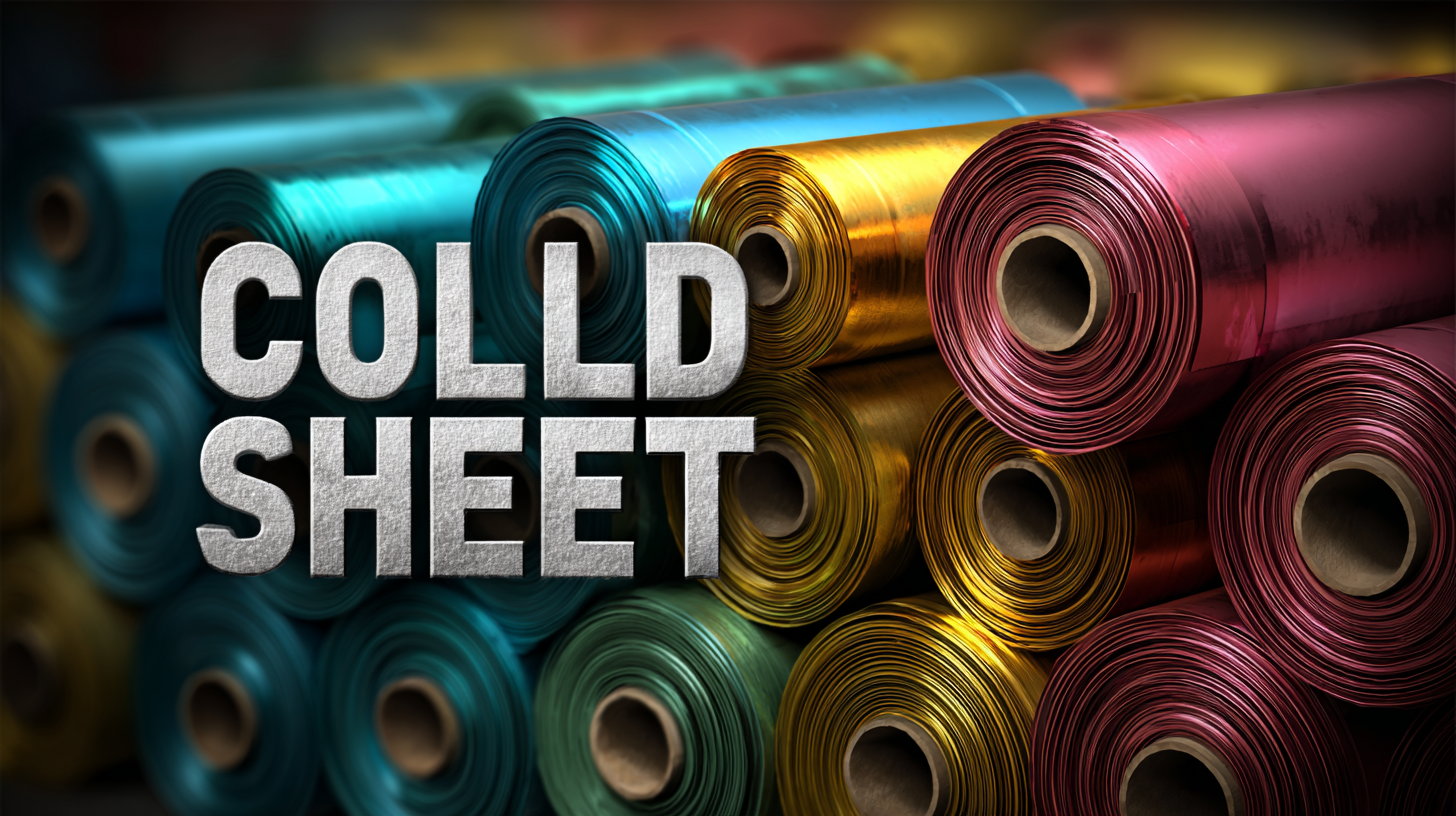In today's competitive manufacturing landscape, selecting the right materials is critical for operational efficiency and product quality. Among these materials, Cold Rolled Sheets play a pivotal role in various industries, known for their superior surface finish and dimensional accuracy. According to a recent report by Smithers Pira, the global demand for cold rolled products is expected to reach 18 million tons by 2025, reflecting a steady annual growth rate of 3.4%. This trend underscores the increasing reliance on Cold Rolled Sheets in automobiles, appliances, and construction sectors. As manufacturers strive to optimize their supply chains and enhance product durability, understanding the nuances of Cold Rolled Sheets becomes essential. This blog will explore essential factors to consider when choosing the best Cold Rolled Sheet for your manufacturing needs, enabling businesses to make informed decisions that align with industry standards and emerging trends.

When selecting cold rolled sheets for manufacturing, several key factors impact their quality and performance, which are crucial to consider to ensure optimal results. First and foremost, the material composition plays a significant role. The alloying elements, such as carbon, manganese, and chromium, not only determine the strength and ductility of the sheet but also influence its corrosion resistance. Manufacturers should evaluate the specific requirements of their projects and choose a composition that aligns with their needs.
Another important aspect is the thickness and surface finish of the cold-rolled sheet. Thinner sheets may offer flexibility but could compromise strength, while thicker options provide durability at the expense of malleability. Moreover, a superior surface finish can enhance applications where visual appeal or paint adhesion is essential. It's essential to assess how these factors align with the intended application, as they significantly affect the end product’s performance. In this way, making an informed choice ensures that the selected cold rolled sheets meet the rigorous demands of the manufacturing process.

When selecting the best cold rolled sheet for your manufacturing needs, understanding specifications such as gauge, width, and coating is essential. Gauge refers to the thickness of the steel sheet; a higher gauge number indicates a thinner sheet. For instance, common gauges range from 10 to 30, with lower gauges providing enhanced strength and durability. Additionally, the width of the sheets can vary, typically from 36 to 72 inches, which affects the cost and the suitability for different applications.
Coatings also play a crucial role in the performance and longevity of cold rolled sheets. Options like galvanization or polymer coatings can enhance corrosion resistance, as documented in studies that show improved mechanical properties in coated steel sheets under various environmental conditions.
Tip: When choosing a cold rolled sheet, always consider the specific requirements of your project. Check the ASTM standards for clarity on the material properties and ensure that the gauge and coating align with your manufacturing processes.
Another vital consideration is the mechanical properties, such as the Young's modulus and yield strength, which are influenced by both the thickness and the treatment processes used. Reports indicate that cold rolled sheets exhibit a robust stress-strain curve, vital for applications requiring flexibility in bending and forming.
Tip: Always request the material certifications from suppliers to guarantee compliance with relevant standards and to assess the expected performance of the cold rolled sheets in your specific application.
When considering manufacturing processes, the economic benefits of using cold rolled steel cannot be overstated. One of the key advantages lies in its superior finish and tighter tolerances, which reduce the need for additional machining or surface treatments. This not only lowers production costs but also minimizes material waste, making cold rolled steel an economical choice for manufacturers aiming to optimize their budgets.

Moreover, cold rolled steel exhibits greater strength and durability compared to hot rolled alternatives, allowing for the production of lighter and more resilient components. This enhances the product's lifespan and reliability, ultimately decreasing long-term maintenance and replacement costs. By investing in high-quality cold rolled sheets, manufacturers can improve their overall efficiency and productivity while simultaneously increasing the value offered to their customers.
As businesses strive to balance cost and quality, the choice of cold rolled steel emerges as a strategic move that aligns with both economic objectives and sustainability goals.
When selecting a supplier for cold rolled sheets, assessing their quality certifications is paramount. Certifications like ISO 9001, ASTM standards, and others signify that the manufacturer adheres to rigorous quality management practices. These certifications not only reflect a commitment to quality but also ensure that the products meet specific industry standards required for various applications. By choosing a supplier with recognized certifications, manufacturers can trust that the materials they receive will perform reliably in their operations.
Moreover, quality certifications often indicate a supplier's ability to maintain consistency and traceability in their manufacturing processes. Suppliers that invest in obtaining these credentials typically have established systems in place for monitoring quality at every stage, from raw material sourcing to final production. This level of diligence can help manufacturers avoid costly mistakes and delays associated with inferior products. In an industry where precision and reliability are paramount, partnering with certified suppliers can provide peace of mind and contribute to the overall success of manufacturing projects.
| Quality Certification | Description | Importance in Manufacturing | Common Standards |
|---|---|---|---|
| ISO 9001 | Quality management systems | Ensures consistent quality and improvement | ISO 9001:2015 |
| ISO 14001 | Environmental management systems | Demonstrates commitment to environmental standards | ISO 14001:2015 |
| ISO 45001 | Occupational health and safety management | Ensures safe working conditions | ISO 45001:2018 |
| ASTM A1008 | Standard specification for cold-rolled carbon steel sheet | Ensures material meets performance specifications | ASTM A1008/A1008M |
| FSSC 22000 | Food safety system certification | Critical for manufacturers in food contact applications | FSSC 22000 version 5 |
The global manufacturing landscape is witnessing a notable shift towards high-quality cold rolled sheets, driven by increasing demand for durable and efficient materials. This trend is closely linked to the growing reliance on cold rolled scrap steel exports from countries like India and Thailand, where production capabilities have expanded significantly. As manufacturers seek sustainable options, the preference for high-quality cold rolled sheets over traditional materials is expected to rise, pushing producers to enhance their offerings in response to market requirements.
Moreover, the decrease in domestic consumption and rising export demands underscore the need for suppliers to innovate and adapt. With countries like Vietnam ramping up their cold rolled titanium plate production, the competition is intensifying. Manufacturers must stay attuned to market dynamics, focusing on material quality, production efficiency, and cost-effectiveness to thrive in an evolving landscape. As the steel industry faces pressures from economic fluctuations and varying construction demands, the ability to provide high-quality cold rolled sheets will be pivotal in maintaining a competitive edge in global markets.



